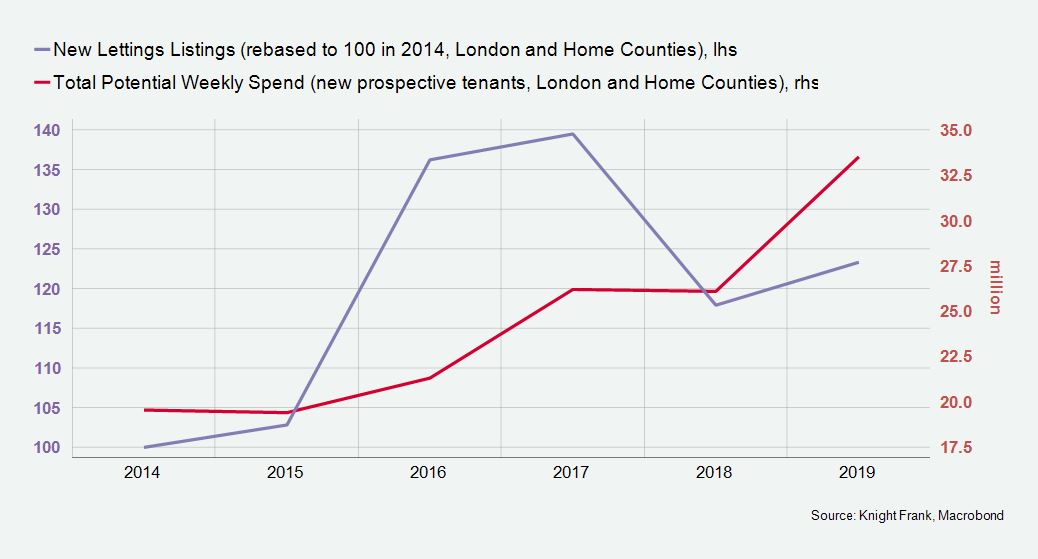Rental market dynamics point to medium-term growth in London
The affordability squeeze in the sales market will continue to boost demand once normal service returns in the capital’s lettings market
2 minutes to read

You may have made the reasonable assumption that the lettings market would not have felt the impact from Covid-19 as quickly as the sales market.
Tenancy agreements by their nature are inherently more flexible than a sales contract and allow people to hedge their bets or wait out market volatility of the sort we are witnessing at the moment.
However moving into a rented property involves a lot paperwork and physical checks in a tight timeframe, with inventory and safety checks as well as cleaning.
Tenancies are still being agreed, despite Boris Johnson’s ramping up of social distancing rules. For most tenants, the need to move home is a time critical process. The impact of the new official restrictions on the lives of tenants will become clearer over the next few weeks.
The other issue that will become clear over time is the impact of Covid-19 on the level of rent tenants will be paying, especially in London.
What we do know is that prime London rents have been strengthening. Unlike house prices, this process started long before the general election.
Rental values in London have been on an upwards trajectory partly because an increasing number of landlords have decided to trim their portfolios or leave the sector altogether after successive governments decided they were a politically useful source of tax revenues.
At the same time, well-documented affordability pressures in the capital meant renting had become the obvious route for an increasing number of residents.
All of which meant that the total potential weekly rental spend by new tenants registered with Knight Frank climbed to its highest level in more than ten years in 2019 – a total of £33.5 million. This growth was reflected in the fact that Knight Frank agreed 48% more tenancies last year than in 2018.
As the graph above shows, the number of listings has been heading in the opposite direction despite the growth of demand, which explains the upwards pressure on rents.
While none of this tells us when a semblance of normal service will resume in the London lettings market, it does confirm that when it does return, the underlying supply and demand dynamic may well drive rents higher.